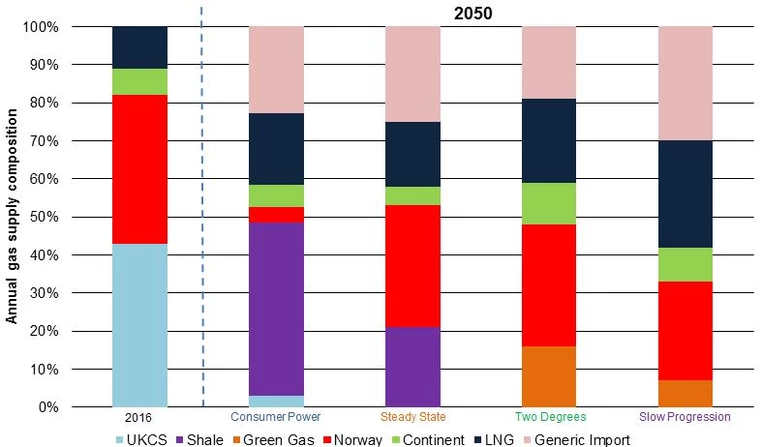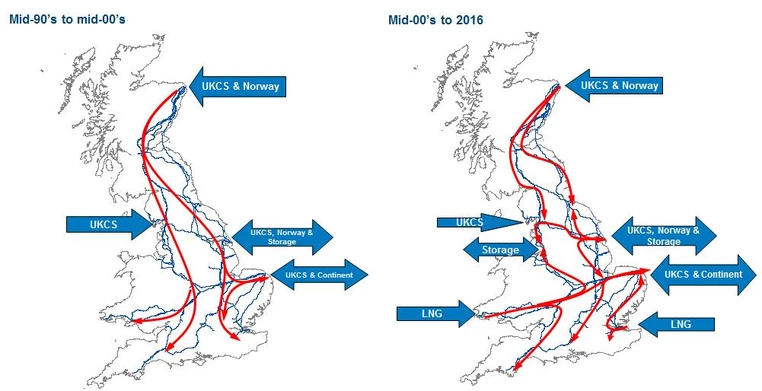2018 -> 2050 How could supply patterns change going forwards?
The Future Energy Scenarios (FES) forecasts that over the next 30 years, UKCS production will continue to decline. In addition, Norwegian Continental Shelf (NCS) supplies are expected to reduce.
In some scenarios, the development of other indigenous sources (shale gas, biomethane and biosubstitute natural gas (bioSNG)) replaces these conventional supplies. However, in three out of four scenarios, imported gas will become even more important.




